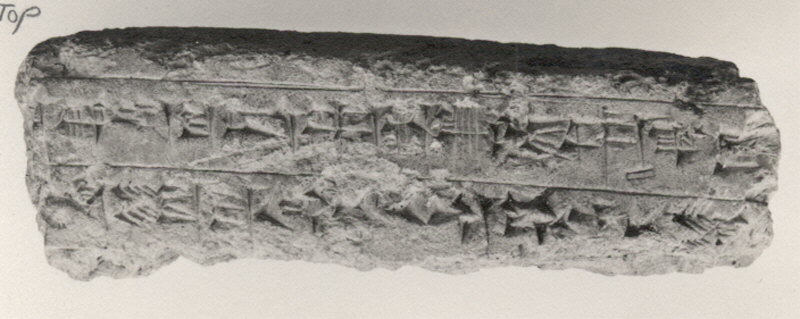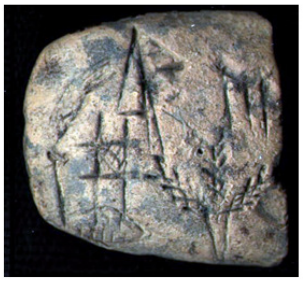Another day, another god of scribes. Today’s tablet is from the Metropolitan Museum of Art in New York. It contains an inscription of Nebuchadnezzar II about his works to restore Ezida temple, the place dedicated to the worship of Nabu.
Looking into this, it jumps out at you that lots of traditions have overlaps relating to gods of scribes, writing, and related concepts. Other gods in other pantheons play similar roles. Apollo and Mercury as messengers for the Greek and Roman gods respectively, or even Odin who is associated with runes. Nabu is so closely associated with scribes and writing that he is generally represented holding a stylus and tablet. Just like in Catholic iconography, Sumerian/Akkadian gods can be identified by some accessory they carry with them. Cuneiform, as we saw yesterday with Nisaba, can in some way be seen as a symbolic form of this representation. The idea of a god of writing becomes an image of a god writing, then of the tools he uses as a synecdoche, and then further abstracted to a pictogram, and finally a cuneiform name which is almost unreadable as a the tablet and stylus is represents, but still conjures the same idea in the mind of the read: Nabu, god of writing.
So back to this temple at Ezida, in the ancient city of Borsippa. Nice for Nabu to have his own temple, no? It’s something that was either denied to Nisaba, or those wandering archeologists just haven’t yet stumbled across its remains in the deserts of Iraq.
Or there’s a third possibility: it may be that temples formerly dedicated to Nisaba were later turned over to the worship of Nabu. Over time, female deities like Nisaba were shoved out of the way by male deities like Nabu. How exactly Nabu is related to Nisaba is unclear. Did he undergo a sex change as the Sumerian culture was supplanted by Babylonian? In some sources, Nisaba was Nabu’s wife. Can’t have been nice for her to watch her husband supplant her. And why was this? Can we read into this shift, a similar shift in the social status of women?
As well as Greek, Roman and Norse gods of writing, and muc,h much earlier, the Egyptians credited the goddess Seshat with the creation of writing (hieroglyphics in this case). Similar to the fate of Nisaba, she was later heavily demoted to the role of consort of the baboon-headed Toth (or ibis-headed – a bit of a shape-shifter, this one). Toth then took full credit for creation of writing, like that one guy in a meeting who repeats a suggestion which was just ignored when raised by a female colleague.
And on the subject of fates, as a writer, Nabu was also thought to write the fates of man. Like the Greek Morai, weaving life’s rich tapestry, he wrote down what was to come. This idea that writing something makes it real is worth exploring. Writing down what was said, as was the task of scribes, makes it more real than if it remains in the minds of the listeners. Until the writing comes along, ideas are ephemeral. They rarely survive more than a lifetime, and are subject to the Chinese whispers effect, changing with every retelling in subtle ways. Text though is concrete. Text survives for millennia, and the ideas condensed on clay tablet, papyrus, or carved in stone survive. Images become symbols and signs. Ideas condense into the written word. Written fates inevitably becoming lived lives, the most concrete thing of all.

